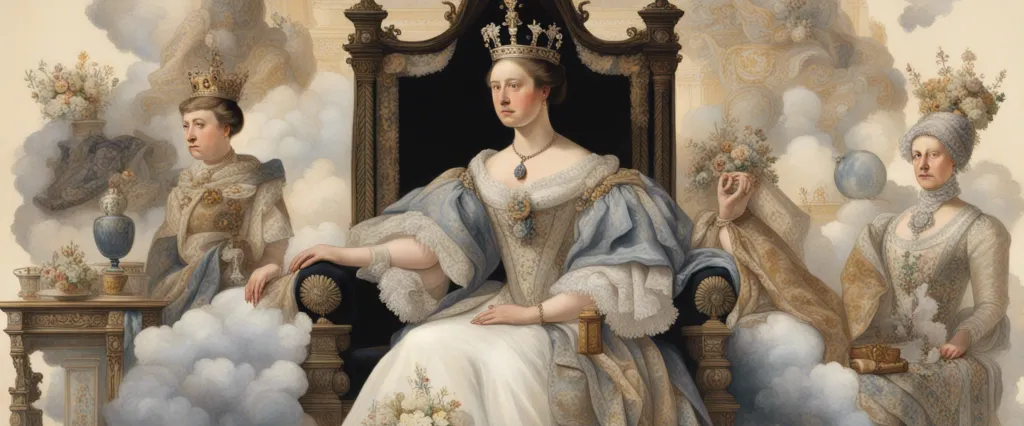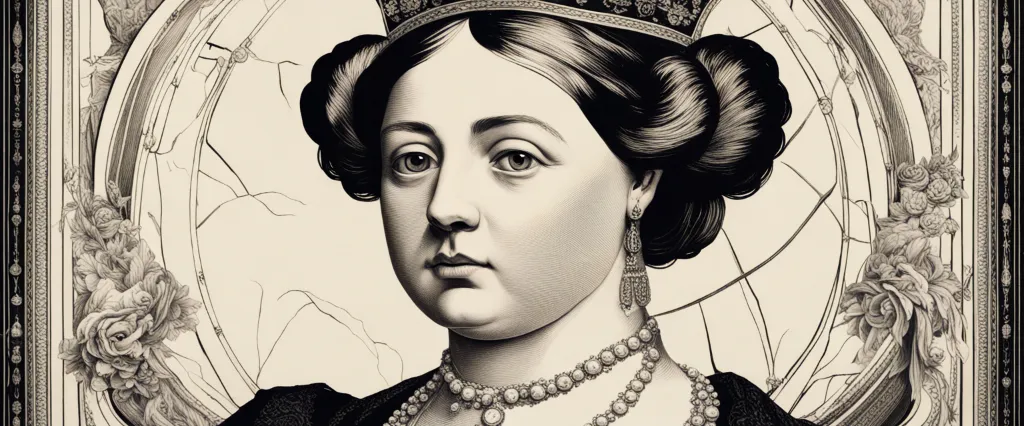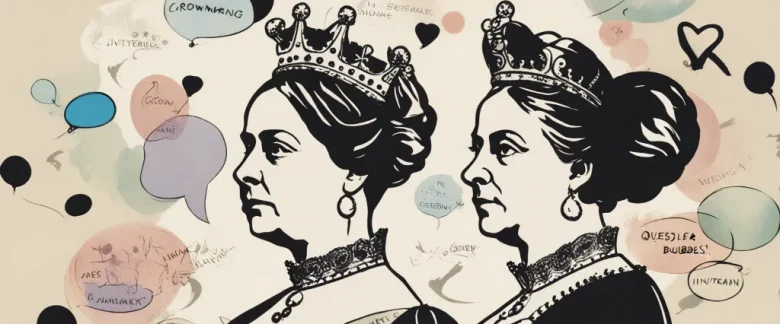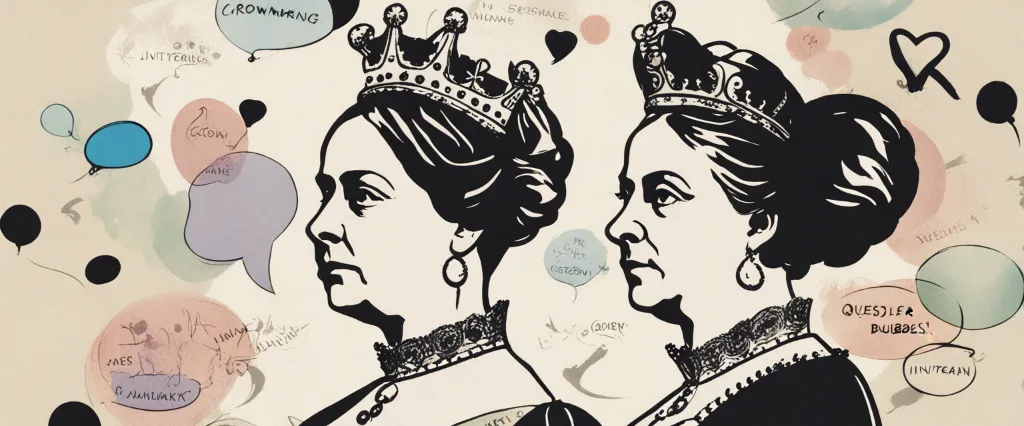In her remarkable biography, “Victoria The Queen,” Julia Baird delves into the extraordinary life and reign of one of Britain’s most iconic monarchs, Queen Victoria. Drawing upon a wealth of historical records and personal writings, Baird peels back the layers of myth and misconceptions to present an intimate and insightful portrait of this influential queen. As an accomplished journalist, author, and broadcaster, Julia Baird uses her extensive expertise in history and gender studies to provide a fresh perspective on the life and reign of Queen Victoria.
Chapter 1: Early Life and Ascension to the Throne
In Chapter 1 of “Victoria The Queen” by Julia Baird, the author delves into the early life and ascension to the throne of Queen Victoria. The chapter presents a comprehensive account of the Queen’s family background, her upbringing, and the political circumstances that propelled her to rule the British Empire at a young age.
The narrative begins by introducing Victoria’s parents, the Duke and Duchess of Kent, and their tumultuous relationship. Despite her father’s untimely death shortly after her birth, Victoria quickly became the heir presumptive as her uncles and her frail cousin were next in line, excluding her uncles’ illegitimate children from succession.
Baird then explores Victoria’s upbringing, marked by a strict and isolated childhood under the influence of her ambitious mother and her advisor, Sir John Conroy. While Conroy aimed to control Victoria’s upbringing, her fiery spirit managed to elude his stifling grasp.
The narrative shifts to the political landscape, recounting the Regency crisis and the reign of William IV. With each passing year, the British Empire faced mounting challenges, including political unrest and societal changes. Against this backdrop, the young Victoria’s ascension to the throne at the age of 18 was greeted with a mixture of hope and skepticism.
The chapter concludes with Victoria’s declaration as Queen and her initial impressions of her newfound responsibilities. It emphasizes her determination to assert her authority amidst the male-dominated environment of the British monarchy.
Overall, Chapter 1 of Victoria The Queen provides a richly detailed account of Queen Victoria’s early life, shedding light on the formative experiences that shaped her character and prepared her for the arduous task of ruling the British Empire.
Chapter 2: Marriage and Family Life
Chapter 2 of “Victoria The Queen” by Julia Baird delves into the marriage and family life of Queen Victoria. The chapter explores Victoria’s childhood and her relationship with her mother, as well as her early years as Queen of England.
Victoria’s mother, the Duchess of Kent, had a significant influence on her. She kept a close eye on Victoria’s education and upbringing, which included strict rules and isolation from other children. Despite feeling overwhelmed by her mother’s control, Victoria held a deep respect for her, often referring to her as “the best of mothers.”
At the age of 18, Victoria ascended to the throne and became the Queen of England. Her reign was marked by a period of great modernization and change. However, being young and inexperienced, Victoria was often advised by her prime ministers and relied heavily on their counsel.
Although Victoria was a powerful figure as queen, she found herself hesitant and unsure in matters of marriage. Baird explores Victoria’s romantic interests, including her infatuation with her cousin, Prince Albert of Saxe-Coburg and Gotha. After meeting Albert for the first time, Victoria was captivated by his intelligence and gentle nature.
Eventually, Victoria and Albert married, and their union became one of great significance and love. They shared a deep bond and embarked on an ambitious project to redefine the role of a British monarch’s spouse. Albert was instrumental in advising Victoria on political matters, but their marriage also endured its fair share of challenges and tests.
Overall, Chapter 2 of “Victoria The Queen” highlights the pivotal role of marriage in Victoria’s life and how her relationship with Prince Albert shaped her reign as queen.
Chapter 3: Political and Social Influences
Chapter 3 of “Victoria The Queen” by Julia Baird explores the political and social influences that shaped Queen Victoria’s reign. The chapter highlights the complex relationship between royalty and politics during this time and delves into Victoria’s struggles and triumphs in navigating her role as a constitutional monarch.
The chapter begins by focusing on Victoria’s gradual journey towards political maturity. Widowed at a young age, Victoria was initially under the influence of her mother and her trusted adviser, Sir John Conroy. However, as Victoria ascended the throne at the age of 18, she gradually gained independence and took control of her own affairs. She was exposed to a wide range of political opinions through her discussions with Lord Melbourne, her first Prime Minister, who played a significant role in shaping her understanding of the political landscape.
Victoria’s reign witnessed numerous political upheavals, including the Chartists movement, which advocated for political reforms and suffrage for the working class, and the rise of the Whig and Tory parties. The chapter explores Victoria’s reactions to these events and her efforts to maintain neutrality as a constitutional monarch. Through her correspondences and private diaries, it becomes apparent that she was not only engaged in political matters but also had strong opinions, even intervening at times to express her views and exert her influence.
Furthermore, Baird highlights Victoria’s commitment to her royal duties, including granting patronage and supporting charities. Victoria’s involvement in various social issues, such as the abolition of slavery, prison reform, and education, showcased her desire to foster positive social change. However, the chapter also discusses the criticism Victoria faced for her often conservative stances on matters such as women’s suffrage and democratic reforms.
Ultimately, Chapter 3 of “Victoria The Queen” explores the interplay between politics and Victoria’s personal beliefs, showcasing her evolution from an inexperienced young queen to a political figure who exerted substantial influence over her government and the social issues of her time.
Chapter 4: Empire and Colonial Expansion

Chapter 4 of “Victoria The Queen” by Julia Baird, titled “Empire and Colonial Expansion,” delves into Queen Victoria’s fascination with the British Empire and her role in its expansion during her reign. Victoria’s reign coincided with the peak of the British Empire’s power and influence, and she became deeply invested in its growth and success.
The chapter begins by exploring how Victoria’s passion for empire was ignited during her youth. Growing up, she learned about the fantastical lands and people beyond Britain’s borders, nurturing her curiosity and desire to learn more. As she became queen, Victoria saw herself as the torchbearer of the empire and committed herself to expanding its reach.
Baird highlights Victoria’s significant role in the expansion of the British Empire, particularly during the middle of her reign. The queen’s attention turned to the African continent, and she became personally invested in the colonization of Africa. Victoria’s motivation was not solely economic; she saw the empire’s mission as a noble effort to bring civilization and progress to the world.
The chapter also explores Victoria’s relationships with key figures in the empire’s expansion, such as Prime Minister Benjamin Disraeli. Disraeli’s advocacy for imperial expansion resonated with Victoria, and together they worked to strengthen and expand the empire.
Overall, Chapter 4 of “Victoria The Queen” paints a vivid picture of Queen Victoria’s obsession with empire and colonial expansion. It emphasizes her personal investment in the empire’s success and her determination to bring British influence to lands around the world. Victoria’s passion for the empire and its expansion played a significant role in shaping British history during the 19th century.
Chapter 5: Victorian Society and Culture
Chapter 5: Victorian Society and Culture delves into the various aspects of Victorian society and the profound cultural changes that took place during Queen Victoria’s reign. Julia Baird explores the complexities and contradictions within this era, highlighting both the progress and the limitations experienced by different segments of society.
The chapter begins by examining the effects of the Industrial Revolution on Victorian society. The boom in industrialization brought wealth and economic growth, but also precipitated social inequality and poverty. Baird discusses the stark difference between the opulent lifestyles of the upper classes and the harsh living conditions endured by the working class. She further looks at the emergence of the middle class and their aspirations to emulate the aristocracy, seeking to improve their social standing through education and self-improvement.
In terms of gender roles, Baird explores how Victorian society was characterized by strict expectations for women. Women were confined to the domestic sphere and expected to adhere to the ideals of virtue and motherhood. However, Baird also highlights the increasing opportunities for women in education and employment, as well as their active involvement in social causes like the abolition of slavery and women’s suffrage.
The chapter also examines cultural developments during the Victorian era, particularly in the realms of art, literature, and science. Baird discusses the rise of the Pre-Raphaelite Brotherhood, a movement that sought to bring back medieval values and themes into art. She also explores the works of prominent Victorian authors like Charles Dickens and Elizabeth Gaskell, who often explored social issues and inequalities in their novels. Furthermore, Baird emphasizes the scientific advancements of the era, including Charles Darwin’s theory of evolution, which challenged traditional religious beliefs.
Overall, Chapter 5 provides an insightful summary of the complexities of Victorian society and culture, showcasing both the progress and limitations experienced by different segments of the population during Queen Victoria’s reign.
Chapter 6: Personal Loss and Grief
Chapter 6 of “Victoria The Queen” by Julia Baird delves into the personal loss and grief experienced by Queen Victoria. In this chapter, Baird explores the profound impact of death on Victoria’s life, examining not only the sorrows she endured but also the ways in which she coped with her grief.
The chapter begins by focusing on the death of Victoria’s beloved husband, Prince Albert, in 1861. Baird depicts Victoria’s overwhelming sorrow and her consequent withdrawal from public life. The Queen’s deep mourning lasted for the remainder of her life, and she sought solace in memorializing Albert through various means, including building monuments, preserving his personal items, and obsessively keeping his memory alive.
Baird highlights the complex relationship between Victoria’s position as a monarch and her personal grief. Despite her heavy mourning, Victoria continued to perform her duties as queen diligently, presenting a stoic image to her subjects. However, her private life was marked by her unwavering sorrow and a fear of death that haunted her until her own passing.
The chapter further explores the tremendous personal losses Victoria endured throughout her life, including the deaths of her mother, father, and three of her children. Baird emphasizes how this continuous stream of grief affected Victoria’s mental state and her relationships with her surviving children.
Overall, Chapter 6 illustrates the deep impact that personal loss and grief had on Queen Victoria’s life. It demonstrates how her experiences not only shaped her as an individual but also influenced her reign as the Queen of the United Kingdom.
Chapter 7: Later Years and Legacy
Chapter 7 of “Victoria The Queen” by Julia Baird explores the later years and legacy of Queen Victoria, covering the period from the late 1870s until her death in 1901. During this time, Victoria underwent various personal losses and challenges, yet she maintained her dedication to her role as queen and left a lasting impact on the British monarchy.
In the later years of her reign, Victoria faced several tragic losses, including the deaths of her husband, Prince Albert, her mother, and several close friends. These losses deeply affected her, and she fell into a state of prolonged mourning, which was characterized by seclusion and an intense withdrawal from public life. However, her grief did not result in her abdication; instead, she remained committed to her responsibilities as queen. She continued to fulfill her duties, even though her popularity waned considerably during this period.
It was during this time that Victoria developed a close relationship with her grandson, Kaiser Wilhelm II of Germany. However, their relationship was complicated, as Wilhelm held increasingly authoritarian and militaristic views, which clashed with Victoria’s more liberal perspective. This relationship highlights the tumultuous political climate that Europe was experiencing during this era.
Victoria’s influence extended beyond her personal relationships. She was instrumental in establishing organizations and initiatives that improved the lives of her people. For instance, she actively worked towards the abolition of child labor and the expansion of education for girls. Additionally, Victoria’s dedication to her empire and her role as a powerful symbol of British superiority significantly impacted the British monarchy’s legacy.
In conclusion, Chapter 7 of “Victoria The Queen” explores Queen Victoria’s later years and legacy. Despite experiencing personal losses and enduring grief, Victoria remained devoted to her role as queen and continued to fulfill her responsibilities. Her relationships with individuals such as Kaiser Wilhelm II exemplify the complex political landscape of the time. Victoria’s influence extended beyond her personal relationships and her commitment to her empire and the betterment of her people ensured her lasting impact on the British monarchy.

Chapter 8: Reflections and Historical Significance
Chapter 8 of “Victoria The Queen” by Julia Baird discusses the reflections and historical significance of Queen Victoria’s reign. In this chapter, Baird highlights the lasting impact of Victoria’s rule and how it has shaped British history.
The chapter begins by discussing Victoria’s views on the monarchy itself. It is revealed that she believed in the importance of constitutional monarchy, which provides a balance of power between the monarch and the government. Victoria’s long reign also saw the expansion of the British Empire and its influence around the world. Baird emphasizes how this expansion was influenced by Victoria’s personal relationships with foreign leaders and her belief in British imperialism.
The chapter then delves into Victoria’s role as a mother and the impact this had on her legacy. Despite her extensive public duties, Victoria was deeply invested in her role as a mother, which created a model of family values that endured for generations to come. Her intense grief at the loss of her husband, Prince Albert, also defined her later years and had a profound impact on societal mourning customs.
Furthermore, Baird explores Victoria’s influence on gender and feminism. Victoria, as a female monarch, shattered gender norms and expectations, proving that women were capable of both power and leadership. Her reign coincided with the rise of the suffrage movement, which sought to secure voting rights for women.
The chapter concludes by discussing how Victoria’s reign continues to shape the modern monarchy. Even today, the British monarchy is influenced by the traditions and protocols established during her reign. Victoria’s reign also left a lasting impact on British society, politics, and culture, making her one of the most influential monarchs in British history.
Overall, Chapter 8 of “Victoria The Queen” provides a comprehensive summary of the historical significance and reflections on Queen Victoria’s reign, highlighting her impact on the monarchy, family values, gender, and society as a whole.
After Reading
In conclusion, Julia Baird’s book “Victoria The Queen” provides a comprehensive and compelling biography of Queen Victoria, shedding light on her complex personality, remarkable achievements, and enduring legacy. Through meticulous research and vivid storytelling, Baird paints a nuanced portrait of this extraordinary monarch, revealing her personal struggles, political astuteness, and unwavering commitment to her role as a leader. By examining Victoria’s reign and its impact on society, politics, and the British Empire, Baird showcases the timeless relevance of Victoria’s story and confirms her enduring status as an influential figure in history.
1. “The Queen’s Governess” by Karen Harper: This novel provides a fascinating glimpse into the life of Queen Elizabeth I by exploring her close relationship with her childhood governess, Kat Ashley. Spanning over four decades, it delves into the political intrigue, personal bonds, and the immense challenges faced by a young queen navigating her reign.
2. “The Romanov Sisters: The Lost Lives of the Daughters of Nicholas and Alexandra” by Helen Rappaport: For readers intrigued by the lives of powerful women in history, this book offers a captivating account of the four grand duchesses of the last Russian royal family. Rappaport meticulously researched the lives of these young princesses, providing insight into their complex family dynamics, their influence on Russian society, and their ultimate tragic fate.
3. “The Wife, the Maid, and the Mistress” by Ariel Lawhon: This historical fiction novel is a captivating and mysterious tale based on the real-life disappearance of a New York judge in the 1930s. Focusing on the three significant women in the judge’s life – his wife, his mistress, and his maid – the story weaves together secrets, scandal, and the vast divide between the extravagant elite and those who served them.
4. “Catherine the Great: Portrait of a Woman” by Robert K. Massie: For enthusiasts of strong female leaders, this biography provides a detailed and engaging exploration of Catherine the Great’s remarkable reign over Russia. Massie delves into the empress’s journey from a young German princess to becoming a powerful and enlightened ruler who transformed her country.
5. “The Six Wives of Henry VIII” by Alison Weir: Inviting readers to discover the captivating and tumultuous lives of Henry VIII’s six wives, this book offers an in-depth examination of their personal experiences and the intricate political and social landscape of Tudor England. Weir’s meticulous research and engaging storytelling bring to life the women at the center of one of history’s most notorious marriages.




